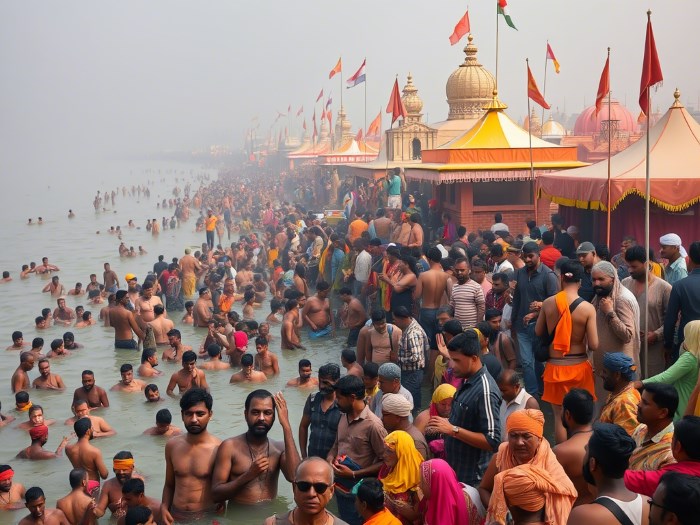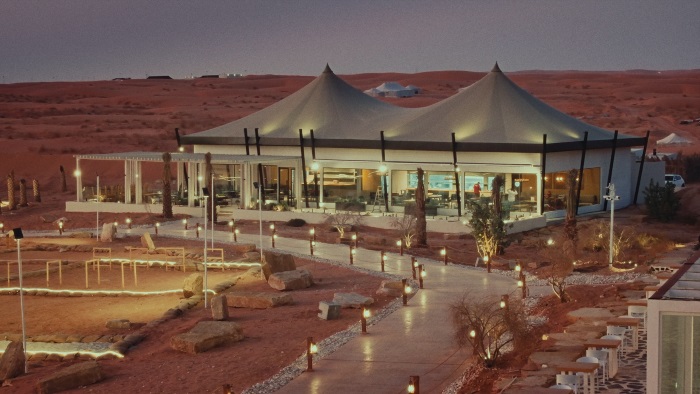The Maha Kumbh Mela 2025, currently underway in Prayagraj, Uttar Pradesh, is the world’s largest spiritual congregation. Held once every 144 years in its full cycle, the event is deeply rooted in Hindu traditions, symbolizing the pursuit of spiritual purification and salvation. Beyond its religious significance, the Maha Kumbh has become a powerful driver of India’s spiritual tourism sector, transforming Prayagraj into a global cultural and economic hub.
Authorities estimate that Maha Kumbh 2025 will attract over 400 million pilgrims, including a significant number of international visitors, surpassing all previous records. Government data shows that by January 19, 2025, more than 73 million pilgrims had already visited the event. Recognizing its growing scale, the Uttar Pradesh government has allocated Rs 7,500 crore for infrastructure development, compared to Rs 4,200 crore spent during the 2019 Maha Kumbh. The event is expected to generate Rs 2 lakh crore in direct revenue and facilitate transactions worth Rs 2–4 lakh crore, contributing over 1% to India’s GDP.
Economic Ripple Effects Across Sectors
The Maha Kumbh is creating significant economic impact across multiple industries. The travel and transportation sector is witnessing a surge in demand, with increased domestic and international bookings, pilgrim tours, and local transport services benefiting airlines, railways, and private operators.
Gopal Krishna Agarwal, National Spokesperson of BJP for Economic Affairs, says: “Maha Kumbh’s spiritual significance is attracting global attention, fostering greater interest in India as a travel destination. Besides its religious importance, Maha Kumbh serves as an economic catalyst, transforming various sectors of India. It’s a massive economic and cultural phenomenon, generating multi-billion rupees worth of economic activity and empowering local businesses. In addition, the government’s tireless efforts ensure Maha Kumbh creates a ripple effect on global interest in India’s spiritual tourism potential. Further, initiatives like the Maitri Bodh Cultural Economic Summit align with this phenomenon, fostering collaboration between culture and economy, showcasing India’s economic strength rooted in our heritage.”
The hospitality sector is another major beneficiary. With the influx of visitors extending beyond Prayagraj, cities such as Varanasi, Lucknow, and Kanpur are witnessing increased demand for accommodations, transport, and related services. Many tourists are extending their stays to explore cultural and historical sites, leading to a significant rise in bookings.
Ambika Saxena, CEO of TWH Hospitality, highlights this shift: “Maha Kumbh is not just a spiritual gathering but a transformative economic force reshaping India’s hospitality and tourism landscape. The unprecedented influx of domestic and international visitors is driving an unparalleled demand for accommodations, transport, and hospitality services, creating immense opportunities for innovation and investment. This event exemplifies how cultural heritage can be a powerful engine of economic growth, reinforcing India’s position as a global tourism powerhouse. We see this as more than just an opportunity. It is a responsibility to elevate India’s global standing and redefine the future of spiritual tourism.”
Positioning India as a Global Spiritual Tourism Hub
Maha Kumbh Mela 2025 stands as a unifying force, seamlessly bridging faith and commerce while strengthening India’s economy. Its unparalleled scale and cultural significance position India as a global leader in spiritual and cultural tourism, attracting millions of domestic and international visitors. With long-term infrastructure investments and rising global interest, the Maha Kumbh is set to further establish India as a premier destination for spiritual tourism.





